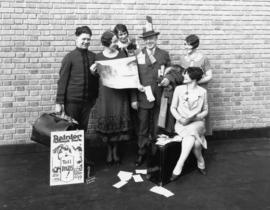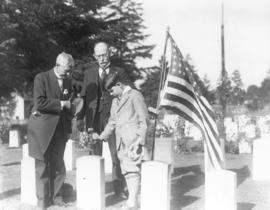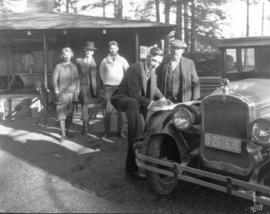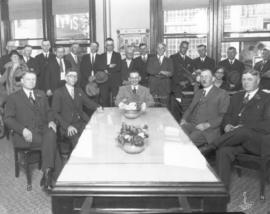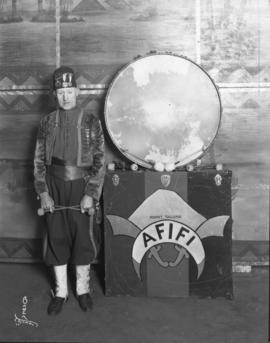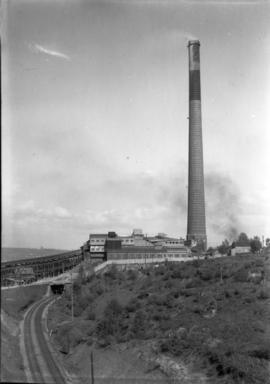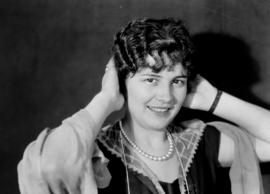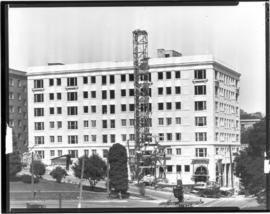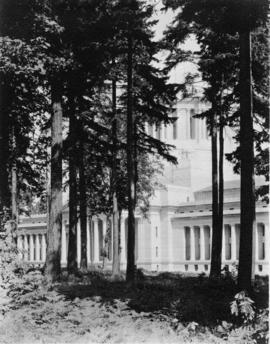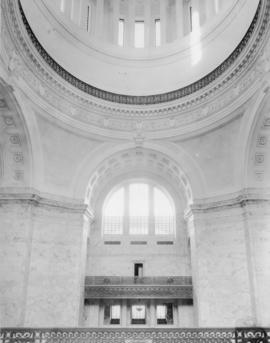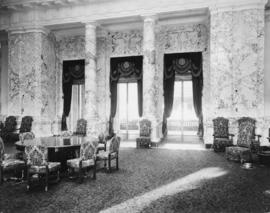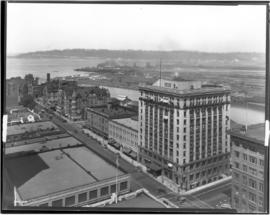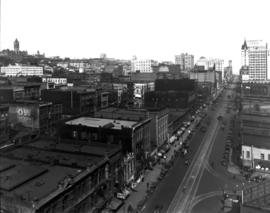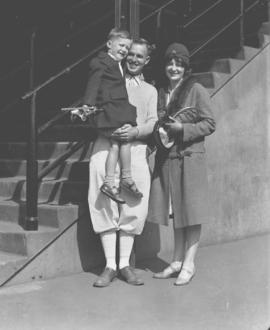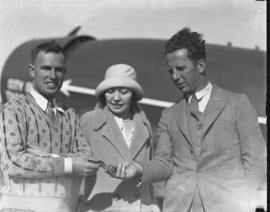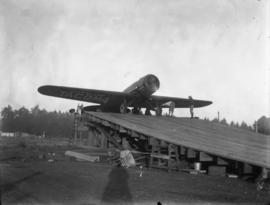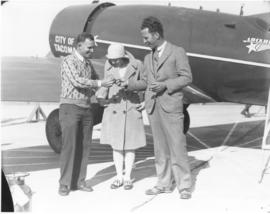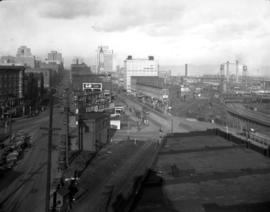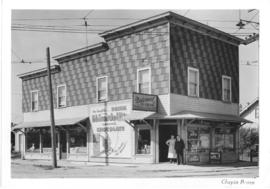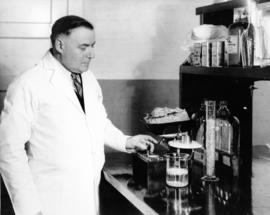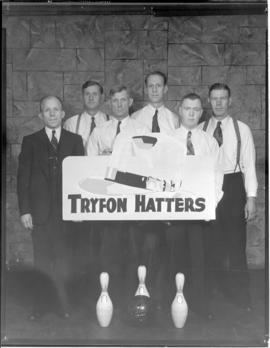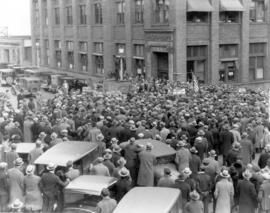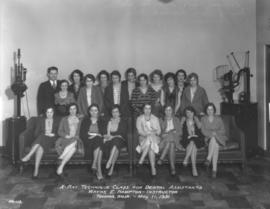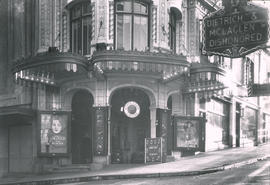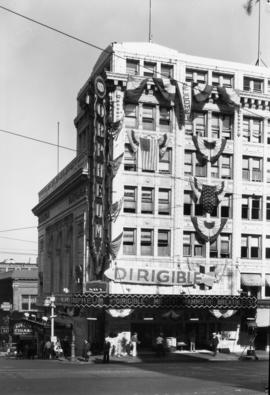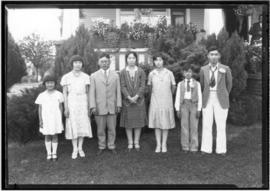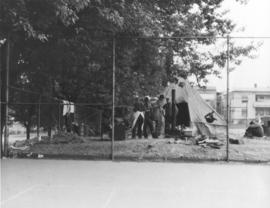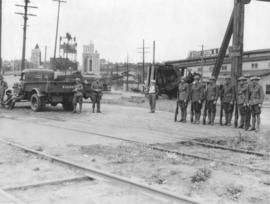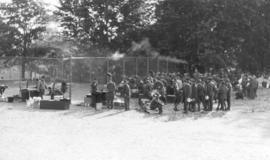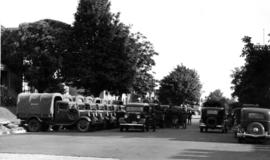- Item
- 1926-03
Part of Chapin Bowen Photographs
In early March of 1926, Albert C.C. Gamer was being loaded down with Tacoma tourist information as he prepared to depart for Paris for the International Hotelmen's Convention. Mr. Gamer, the manager of the Olympus Hotel at 815 Pacific, was approached by area civic organizations as the proper person to carry Tacoma's invitation to Europe. Surrounding Mr. Gamer, left to right, are Joseph Erpelding, carrying Mr. Gamer's bag; Gladys Mase of the City Light Department, giving him facts and pictures of the Cushman power project; Mrs. R.N. Bergen of the Hotel Winthrop; Ruth Edwards (standing) representing the Rainier National Park Co. and Agnes Hansen, representing the Civic Development Bureau of the Tacoma News Tribune. The International Hotelmen met once every three years and the meeting was attending by hosts from all around the world. (TNT 3/11/1926, pg. 1) TPL-6331; Bowen #26141
